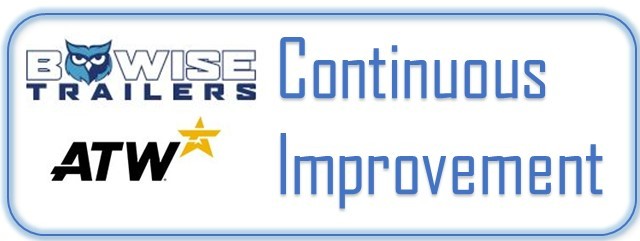Title Page
-
Site conducted
-
Conducted on
-
Prepared by
-
Location
-
Functional Area
Safety
-
Are safety walks performed?
-
Does the Supervisor and/or Team Leads participate in the safety walk on a routine basis?
-
How often is the routine?
-
Preventative measures are taken on a routine basis
-
How often is routine
-
Management is engaged in improving the overall safety of the facility
-
Employees recognize "Risks" and report unsafe conditions
-
There is a defined Ergonomic improvement process
-
Safety Indicators/Flags are included in Standardized Work Instructions
5S
-
All tools have a location and are labeled
-
Tool locations are determined by frequency of use
-
Area is free of debris and oils
-
Daily 5S activities completed with checklist and leadership audits
-
Inside of cabinets / toolboxes have dedicated tool locations and labeling
-
Cross-functional audits routinely performed
-
Floors are clearly marked
-
Color coding is being maintained
-
Inventory min and max are clearly defined and adheard to
Visual Management
-
Production boards in place with SQDCP (Safety, Quality, Delivery, Cost, and People) that apply
-
Action items with owner and due dates are posted and reviewed daily
-
Andon signaling is present and monitored by supervisors and team lead
-
Ahead or behind schedule is clearly displayed next to production lines
-
Training and cross-training matrix displayed and utilized
-
Leaders review Key Performance Indicators (KPS's) on a routine basis
-
Continuous Improvement activities are track and monitored for effectiveness
Standard Work
-
Standardized Work Instructions (SWI) are posted in the area
-
TAKT Time is properly calculated and time of each step is part of documentation
-
SWI's align with Quality and Safety
-
Employees have been trained on SWI and are following the process
-
More than 1 employee trained on every job
-
Leadership perform SWI audits and review with the employees
-
Process for improving SWI exist and is followed
-
Work load distribution (Yamizumi charts) are posted and used for line balancing
-
Optimal line rate setup and correlating standard work (Playbook) is up to date and used by the supervisors
Quality
-
Key product quality features called out in standard work
-
FTQ tracked throughout the day and timely feedback system is in place
-
Defects are quarantined and dispositioned within one week
-
Employees understand key quality features pictured in standard work
-
Scrap used for long-term action for resolve
-
FTQ used for long-term action for resolve
-
Are key quality featured been error-proofed
-
Quality policy and objectives are posted and understood by all associates
-
Is there a Automated system that stops the process when an error is detected (Jidoka)
Process Flow
-
All aspects of the process has been considered for flow of material
-
Value stream maps are completed and displayed
-
All access points are unobstructed
-
Workstations are adjustable for employee height
Employee Engagement
-
Employees are active in defining the standard work
-
Employee suggestions are used
-
All employees are part of problem solving
-
Employees are engaged in Continuous Improvement events
Materials
-
Schedule is level loaded
-
Point of Use material presentation is optimized
-
Is there a set mix for scheduling (hiejunka)
-
Is there a pull system in place with re-order points
-
Are lead times for both make and buy materials documented
-
Is there a safety stock set up for each part based upon historic usage, forecast, and leadtime.
-
Are there clearly marked locations for materials that correspond with the ERP system
Set Up Reduction
-
Changeover times are tracked visually and preplanned
-
Set up processes are documented
-
Set up processes are commonized
-
Are there visual controls for set up tools
Total Productive Maintenance
-
Operational Availability is tracked
-
Operator performed a daily maintenance process
-
Scheduled Preventative Maintenance is performed on time
-
Is there a Predictive Maintenance system in place
-
All maintenance activities are tracked
-
KPI's in place to measure OEE in addition to MTTR or MTBF for improvements
Leadership
-
Leadership for the area is using documented standard work
-
Leader standard work includes daily and weekly taskes
-
Leader standard work includes recognition of opportunities
-
Support staff for the line is using documented standard work
-
Evidence of cascading audits is noted and easily linked to follow-up actions
-
Leader standard work includes coaching and knowledge sharing
-
Leadership and commitment with respect to the quality management system






